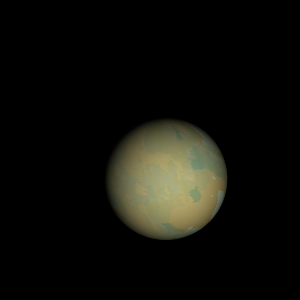|
|
Space Astro
|
Info for exoplanet "Yunkwai"
| Scientific (actual) data |
|---|
| Planet | Kepler-379 c |
| Planet status | Confirmed |
| Radius | 0.204 |
| Orbital period | 62.7847 |
| Semi major axis | 0.326 |
| Discovered | 2014 |
| Updated | 2021-02-05 |
| Tconj | 2454990 |
| Impact parameter | 0.18 |
| Publication | Announced on a website |
| Detection type | Primary Transit |
| Alternate names | 2MASS J19424826+3856449 c, K02289.01, KIC 3867615 c, KOI-2289 c, KOI-2289.01, WISE J194248.25+385644.9 c |
| Star name | Kepler-379 |
| Right ascension | 295.7° |
| Declination | 38.95° |
| Mag j | 12.341 |
| Mag h | 12.092 |
| Mag k | 12.005 |
| Star distance | 747 |
| Star metallicity | -0.045 |
| Star mass | 1.08 |
| Star radius | 1.31 |
| Star temperature | 6054 |
| Star alternate names | 2MASS J19424826+3856449, KIC 3867615, KOI-2289, WISE J194248.25+385644.9 |
| Wikipedia article | Kepler-379 c |
Back
| |
| Fictional info (?) |
|---|
| Suggested name | Yunkwai |
| Planet type | Cold planet |
| Orbiting within Nwanz's orbit, Yunkwai is an inferior planet and never appears to venture far from Kepler-379; its maximum angular distance from Kepler-379 (elongation) is 31 degrees.
This cold planet is named after the deity Yunkwai, the goddess of chaos.
As seen relative to the fixed stars, it rotates on its axis exactly four times for every five revolutions it makes around Kepler-379.
Plans have been proposed for rovers or more complex missions, but they are hindered by Yunkwai's hostile surface conditions. |
| Atmosphere | Ammonium hydrosulfide (NH4SH) | 51% |
| Krypton | 20% |
| Hydrogen deuteride (HD) | 10% |
| Carbonyl sulfide | 9% |
| Ozone | 8.4% |
| Ammonia | 0.8% |
| Argon | 0.00036% |
| Xenon | 5.9E-5% |
| Atmospheric pressure | 2.8 bar |
 |
| No known satellites |
| Google search for Yunkwai |
|
Website by Joachim Michaelis
|
|
|
|